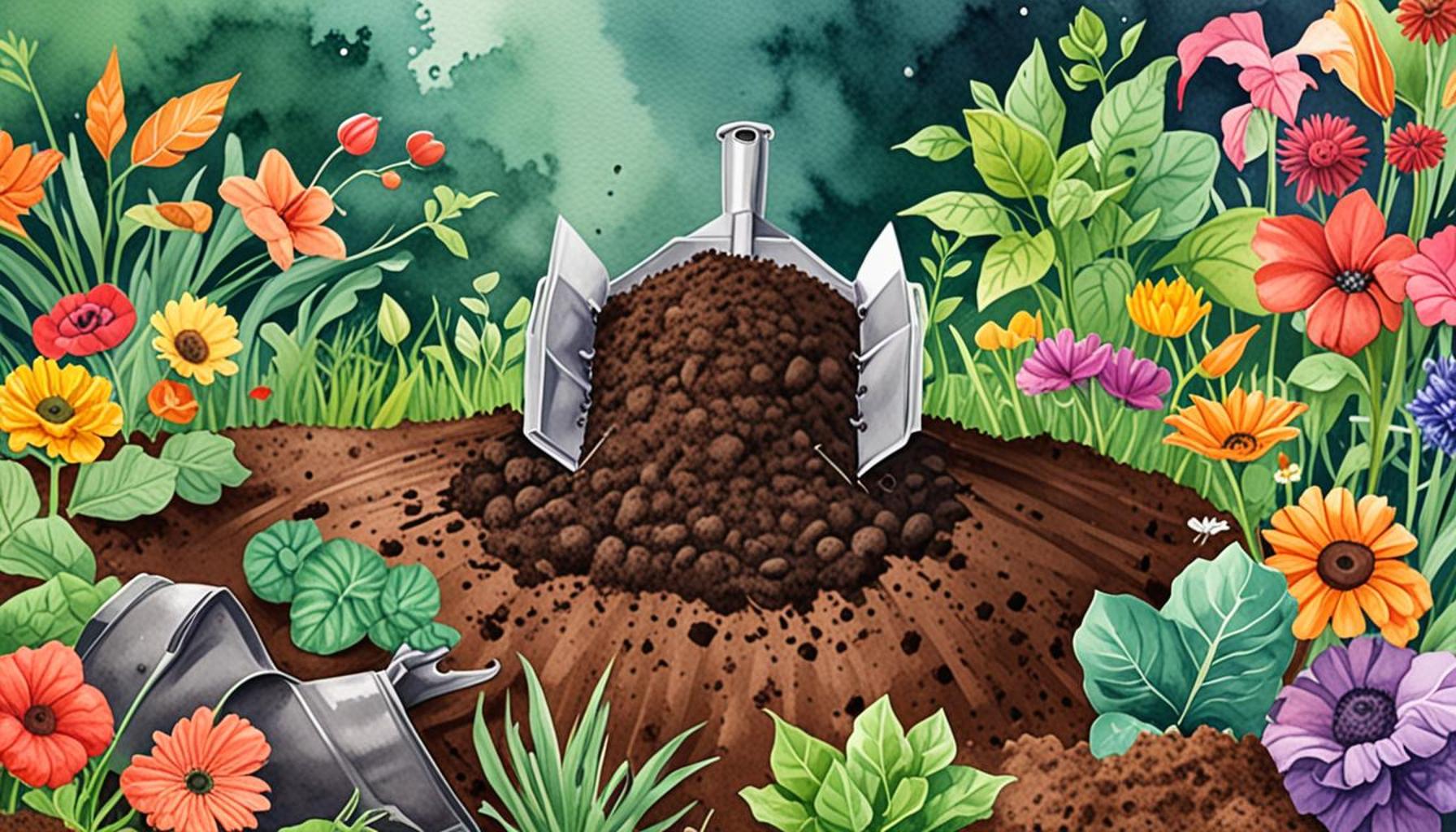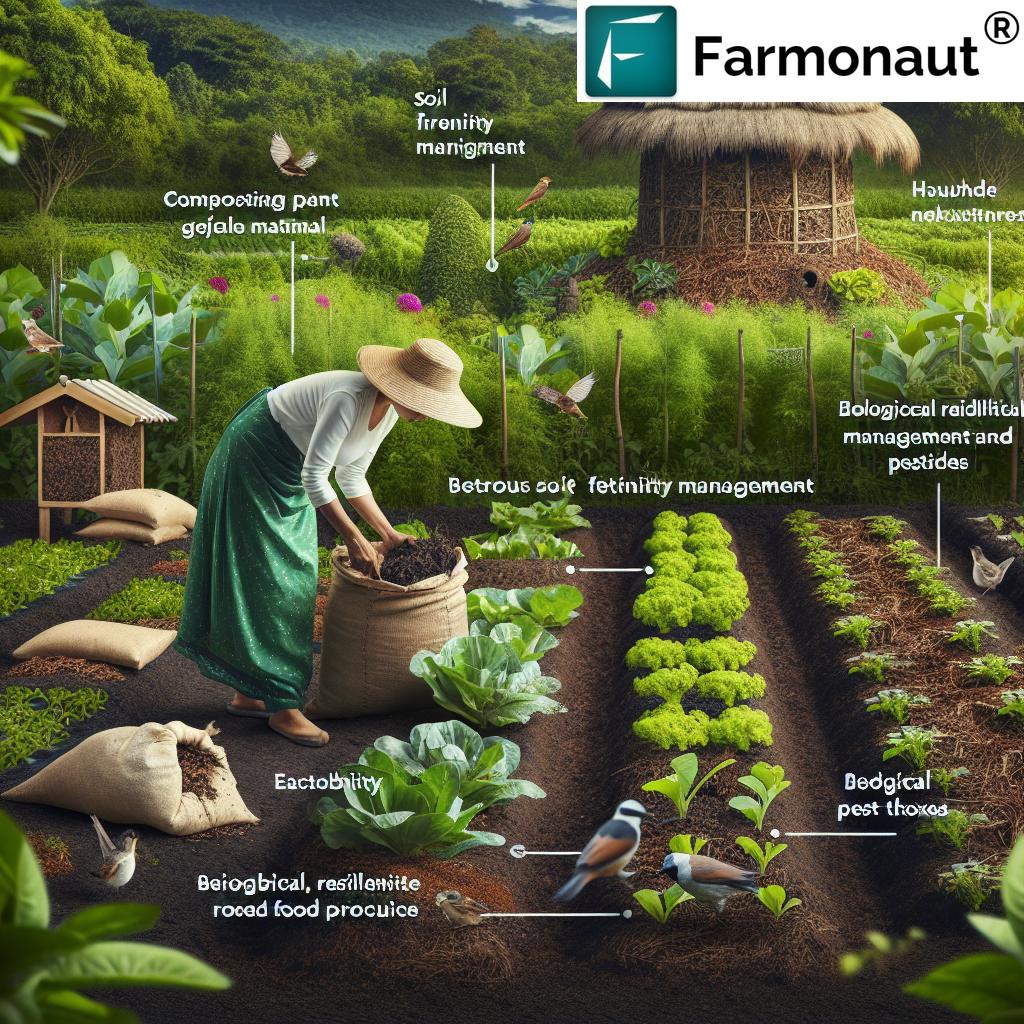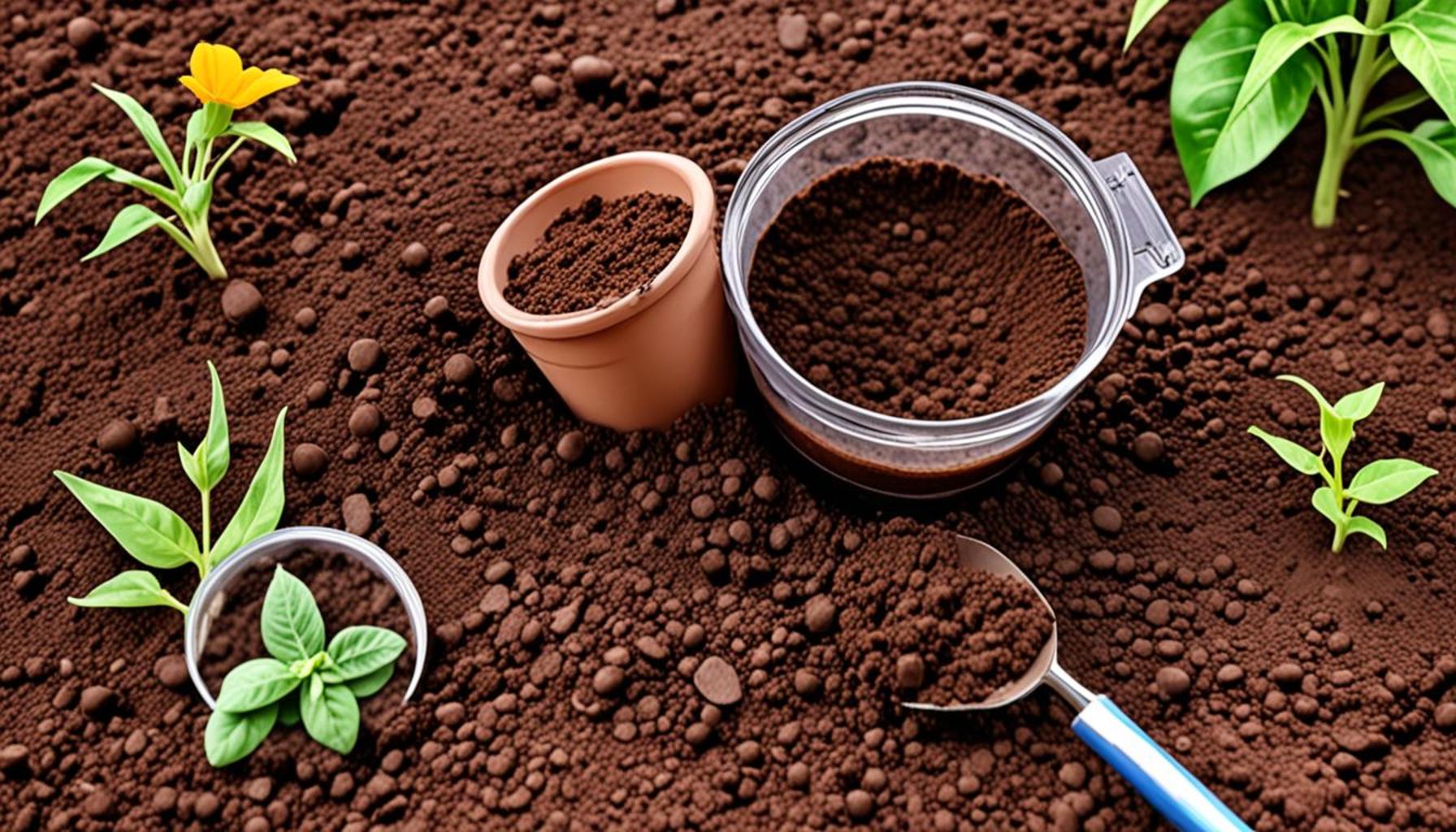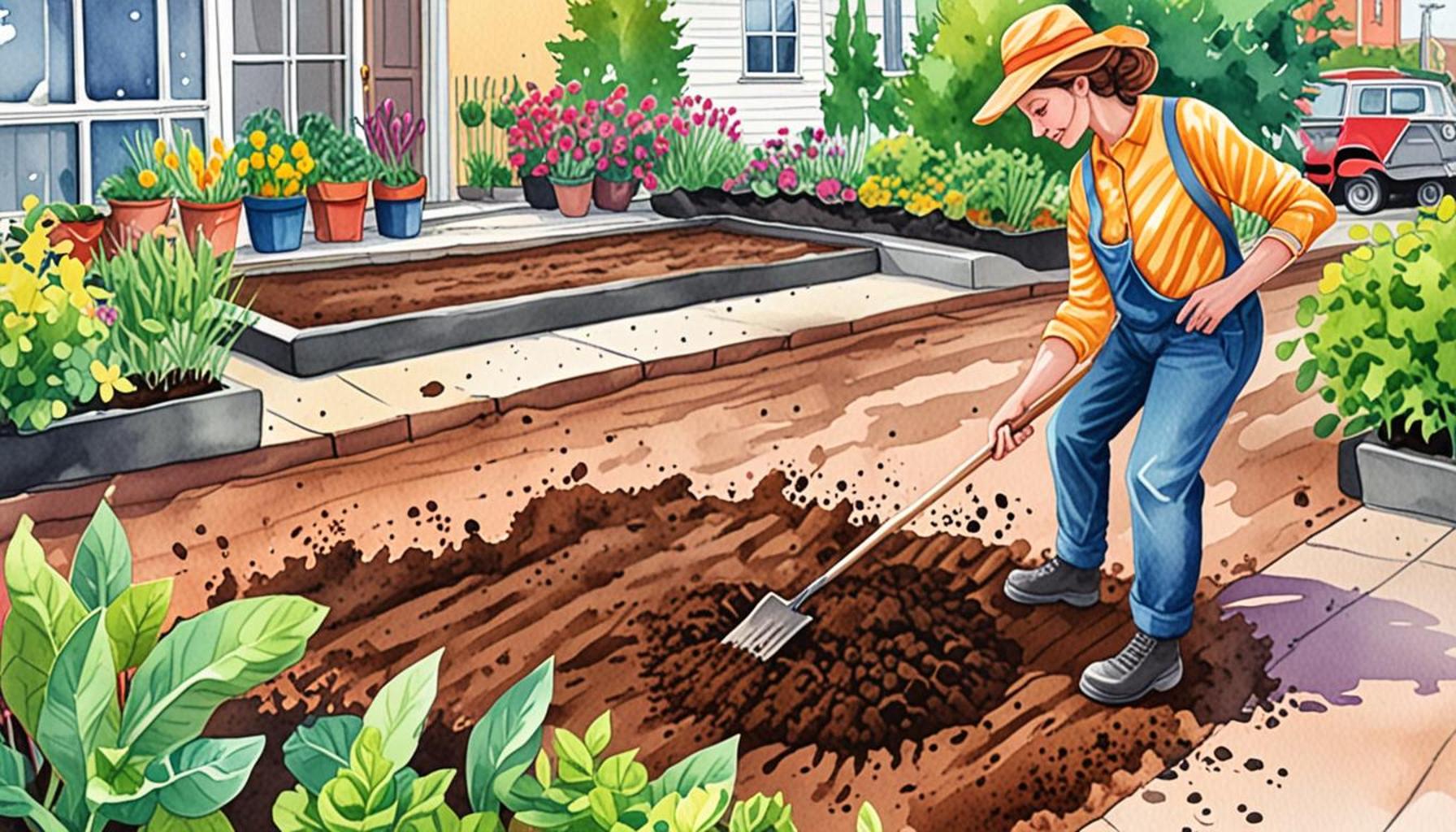How to Create a Sustainable Soil: Composting and Crop Rotation Practices for Beginner Gardeners

Understanding the Importance of Healthy Soil
A thriving garden is not just a product of skilled hands; it’s fundamentally rooted in the soil beneath it. Healthy soil acts as a living ecosystem, home to a myriad of organisms that work together to enrich the ground and sustain plant life. This makes it vital for beginner gardeners to grasp the art of sustainable gardening, which promises not just healthy yields, but also an environmentally friendly approach to cultivation.
At the heart of sustainable gardening lies the understanding of how good soil functions. When we talk about nutrient cycling, for instance, we refer to the process by which natural materials decompose, releasing vital nutrients back into the soil. This is crucial because these nutrients—such as nitrogen, potassium, and phosphorus—are essential for plant growth. When soil is rich in these nutrients, plants are better equipped to grow strong and resist diseases.
Moreover, soil structure plays a pivotal role in a garden’s health. Soils rich in organic matter have better aeration, allowing roots to breathe and water to penetrate effectively. This not only supports robust growth but also helps retain moisture during dry spells, which is especially important when gardening in regions prone to drought, like parts of California or Texas.
Perhaps one of the most compelling reasons to focus on sustainable soil practices is the profound environmental impact. By reducing reliance on chemical fertilizers and pesticides, gardeners can help mitigate soil and water pollution, supporting local ecosystems and reducing carbon footprints. This aligns with a growing trend in the U.S. gardening community toward organic practices, where the focus is placed on growing food that is not only healthy for consumers but also for the planet.
Essential Practices for Sustainable Soil
Taking the first steps into sustainable gardening might seem daunting, but two foundational practices—composting and crop rotation—can significantly simplify the process and enhance productivity.

- Composting: This practice involves transforming organic waste, like kitchen scraps or yard debris, into nutrient-rich compost. For example, vegetable peelings, coffee grounds, and grass clippings can be layered in a compost bin, where microorganisms will break them down into rich humus. This compost can then be used to enrich garden beds, providing plants with a natural and sustainable source of nutrients.
- Crop Rotation: Each time you plant, consider which crops are placed where. By following a rotating schedule—say, planting legumes like beans in one bed in the summer and then moving nightshades like tomatoes to that bed the following year—you help maintain soil nutrients and reduce the risk of pest buildup, as many pests and diseases are crop-specific.
By adopting these practices, novice gardeners can ensure a healthy, sustainable garden while also significantly contributing to the well-being of the environment. As we explore composting and crop rotation further, you’ll uncover not just techniques, but a philosophy that nurtures both the garden and the planet. Embrace the journey toward sustainability, and watch as your garden blossoms into a vibrant ecosystem.
DIVE DEEPER: Click here to discover delicious edible plants for your garden
Essential Practices for Sustainable Soil
Taking the first steps into sustainable gardening might seem daunting, but two foundational practices—composting and crop rotation—can significantly simplify the process and enhance productivity. By understanding and implementing these practices, beginner gardeners can build a robust foundation for healthy plants and improve the ecosystem in their backyards.
Composting: A Garden’s Black Gold
Composting is more than just a way to dispose of organic waste; it’s a dynamic process that transforms kitchen scraps and yard debris into nutrient-rich compost. This natural fertilizer serves as a powerhouse for your garden, enriching the soil and bolstering plant growth. Ideally, you want to aim for a mix of ‘green’ materials—which are nitrogen-rich (like vegetable peelings, coffee grounds, and grass clippings)—and ‘brown’ materials, which are carbon-rich (such as dried leaves, straw, and cardboard).
To start composting, consider creating a designated compost bin in your backyard, or opt for a simple compost pile if space allows. The key to effective composting is maintaining a balance between greens and browns, while ensuring adequate aeration. Turning the compost every few weeks introduces oxygen, an essential element that facilitates the aerobic decomposition process, resulting in rich humus within a few months. The end product can be mixed into your soil or used as a top dressing, giving your plants access to vital nutrients without the adverse effects of chemical fertilizers.
Crop Rotation: A Strategic Approach
Crop rotation is a simple yet effective agricultural practice that involves alternating the types of crops grown in a particular area each season. This not only helps in maintaining a healthy supply of nutrients but also prevents the buildup of pests and diseases that are often associated with specific plants. For instance, planting legumes (like beans or peas) one year, which fix nitrogen in the soil, allows you to plant nitrogen-hungry crops, like corn or tomatoes, the following year.
Implementing a crop rotation plan can range from a simple practice to a detailed strategy, depending on the size of your garden. As a rule of thumb, rotate your crops in groups such as:
- Legumes: Beans, peas, and lentils.
- Leafy greens: Lettuce, spinach, and kale.
- Fruiting plants: Tomatoes, peppers, and cucumbers.
- Root crops: Carrots, potatoes, and beets.
Each group offers different nutrient demands and replenishing capabilities, contributing to a balanced soil ecosystem. By employing crop rotation, beginner gardeners can witness improved plant health, higher yields, and reduced pest problems, making every planting season more fruitful.
In summary, composting and crop rotation are essential tools in the toolkit of sustainable gardening. As novice gardeners embrace these practices, they not only contribute to the health of their gardens but also play a significant role in nurturing the environment. Through consistent implementation of these techniques, you will cultivate a deeper understanding of soil health and sustainability, leading to a garden that truly thrives.
| Advantage | Description |
|---|---|
| Soil Enrichment | Utilizing compost enhances soil structure, improves air and water retention, and provides essential nutrients. |
| Plant Health | Crop rotation disrupts disease cycles and pest populations, promoting healthier plants and higher yields. |
Incorporating compost into your gardening practices not only supports the nutrient cycling necessary for robust plant growth but also enhances microbial activity. This biodiversity is critical for soil health, facilitating the breakdown of organic matter, which releases valuable nutrients over time.Moreover, understanding specific crop rotation schemes allows beginners to diversify their plantings throughout the seasons, reducing the reliance on chemical fertilizers and pesticides. For instance, rotating legumes with leafy greens can effectively fix nitrogen in the soil, boosting fertility and aligning your gardening practices with sustainable methods.By leveraging these practices, novice gardeners can transform their plots into thriving ecosystems that lay the groundwork for long-term sustainability and productive yields.
DISCOVER: Click here for beginner-friendly plant options
Integrating Additional Sustainable Practices
While composting and crop rotation are cornerstones of sustainable soil management, there are several other practices that beginner gardeners can adopt to further enhance soil health and sustainability. These practices not only complement composting and crop rotation but also promote a more resilient ecosystem in your garden, leading to even greater productivity and biodiversity.
Mulching: Protecting Your Soil
Mulching is a practice that involves covering the soil with organic materials such as straw, wood chips, or shredded leaves. This layer serves multiple purposes: it helps retain soil moisture, suppresses weed growth, and moderates soil temperature. Keeping soil temperature consistent is crucial for plant health, as extreme fluctuations can stress young seedlings.
Moreover, as mulching materials break down over time, they gradually integrate into the soil, further enriching it with organic matter. A depth of 2-4 inches of mulch is typically recommended; however, be prudent to keep it away from the stems of your plants to prevent rot. Many gardeners find that mulching contributes significantly to overall soil fertility while reducing the need for supplemental irrigation, especially in hot summer months.
Soil Testing: Understand Your Soil’s Needs
To effectively manage your soil’s health, you first need to understand its current conditions. Conducting a soil test provides valuable insights into the pH levels, nutrient content, and organic matter present in your soil. Numerous resources, including local agricultural extensions and garden centers, offer affordable soil testing kits. By knowing the composition of your soil, you can tailor your amendments—whether that’s adding compost, lime, or fertilizers—to ensure optimal growing conditions.
A soil test also reveals any deficiencies or toxicities, allowing you to make informed decisions about which crops will thrive in your garden. For example, if your soil is low in phosphorus, you may want to select plants like sweet potatoes or onions, known for doing well in such conditions.
Cover Cropping: Restorative Planting
Cover cropping involves planting specific crops not intended for harvest but rather to enhance soil fertility and prevent erosion during the off-season. Common cover crops include clover, vetch, and ryegrass. These plants help replenish nutrients — especially nitrogen — and improve soil structure through their root systems, which create pathways for water and air.
When mature, cover crops can be terminated by tilling them back into the soil, providing green manure that further enriches the soil with organic matter. This practice not only enhances soil health but also prevents nutrient runoff during rainy seasons, thereby protecting local waterways from pollution.
Minimal Soil Disturbance: Preserving Soil Structure
Another important aspect of sustainable soil management is the practice of minimal soil disturbance. Over-tilling or constant digging can dismantle the delicate soil structure, making it vulnerable to erosion and loss of organic matter. Transitioning to no-till or reduced-till methods can enhance soil biodiversity, encouraging beneficial organisms like earthworms and beneficial microbes, which play critical roles in nutrient cycling and soil aeration.
By simply avoiding unnecessary tillage, you maintain the integrity of your soil while promoting a vibrant soil ecosystem, ultimately leading to healthier plants and a more sustainable garden.
Incorporating these practices—mulching, soil testing, cover cropping, and minimal soil disturbance—alongside composting and crop rotation sets a powerful foundation for sustainable soil management. They not only contribute to immediate garden productivity but also lay the groundwork for long-term ecological health, ensuring your gardening efforts are both fruitful and environmentally responsible.
DISCOVER MORE: Click here to enhance your garden with aromatic herbs
Conclusion
Creating a sustainable soil is not just an aspiration for beginner gardeners; it is a vital step towards fostering a healthy garden ecosystem. By adopting essential practices such as composting and crop rotation, you can significantly improve soil fertility, structure, and biodiversity. As explored in this article, these techniques don’t operate in isolation; they intertwine with complementary strategies like mulching, soil testing, cover cropping, and minimal soil disturbance. Each of these methods plays a crucial role in creating an environment that nurtures plant growth while minimizing environmental impact.
Ultimately, the journey to building sustainable soil is a continuous learning experience. By observing the unique needs of your garden and responding with appropriate actions, you will enrich your soil and contribute to a healthier planet. As you integrate these practices, you not only yield fruitful harvests but also cultivate a deeper connection with nature.
This article serves as a stepping stone. We encourage you to delve further into each of these practices and consider how they can integrate into your gardening routine. The rewards of investing time and effort into sustainable soil management extend beyond your garden— they resonate with broader environmental goals, enhancing biodiversity and safeguarding our ecosystems for future generations. Remember, every garden, no matter how small, can make a significant impact on sustainability.



